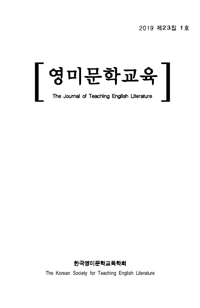Teaching Scientific Romance in Flatland: A Romance of Many Dimensions
Teaching Scientific Romance in Flatland: A Romance of Many Dimensions
- 한국영미문학교육학회
- 영미문학교육
- 영미문학교육 제23집 2호
-
2019.09125 - 154 (30 pages)
-
DOI : 10.19068/jtel.2019.23.2.06
- 31

Flatland: A Romance of Many Dimensions (1884) by Edwin A. Abbott explores the relation of geometry to literature. It is scientific romance in terms of journeying to the unexperienced, unfamiliar world of a higher dimension. Highlighting a shift from lower to higher dimensional spaces, the novel comprises two parts: “This World” and “Other Worlds.” Part I deals with two dimensional Flatland as “This World.” Part II travels over three and four dimensional spaces as “Other Worlds.” There are two teaching methods for addressing the correspondence between geometry and literature: a subordinating approach and an equalizing approach. In Part I, Abbott satirizes contemporary Victorian society through the personification of geometric figures. Two dimensional Flatland is a strictly hierarchical society where circles lie at the top of social order, followed by polygons as nobility, squares as middle-class intellectuals, isosceles triangles as lower classes, and finally straight lines as women at the bottom of class system. Abbott satirizes the rigidity of social rank, the pathologization of socially dangerous classes, the marginalization of women etc.. It should be stressed that Part I hardly concentrates on the issue of how geometric axioms work in Flatland’s class system. For geometric knowledge becomes instrumentalized merely for criticisms of contemporary society. This teaching method can be called a subordinating approach. On the other hand, an equalizing approach focuses on discursive interpenetration between geometry and humanities. Part II shows that a mathematical pursuit of the fourth dimension synchronizes with a satire on diverse kinds of fanatic dogmas in society. We see the interplay between the possible existence of the fourth dimension in geometry and unforeseen intellectual awakening dealt with in humanities. Part II addresses the mutual entanglement of a geometric pursuit of higher dimensions and a humanities search for spiritual enlightenment. Abbott’s Flatland urges readers to form mental ability to relativize reality. As school teacher and administrator, preacher, and literary critic, Abbott is resolute in educating students to take multiple perspectives. Learners in geometry and humanities lessons are pushed to relativize reality through thought experiment imagining higher dimensions. Just as Flatland narrator A Square experiences intellectual awakening with the aid of A Sphere, a stranger from the third dimensional Spaceland, Abbott hopes, students are encouraged to emulate this life-changing reforms of mind.
I. Introduction
II. Geometric Knowledge as a Satire on Society
III. The Reciprocity between Geometry and Literature
IV. Teaching the Relativity of Reality
V. Conclusion
(0)
(0)